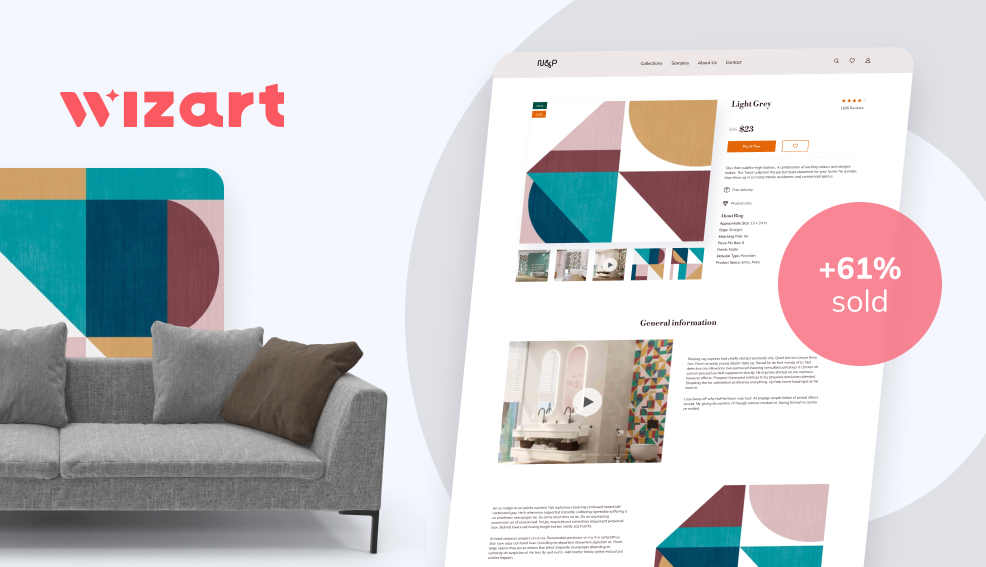E-commerce Trends 2026: How to Increase Your Conversion Rate

Many businesses have already successfully moved online, but having a website is not enough to get high e-commerce conversion. That’s why today we’ll take a look at current e-commerce trends and how you can use them to increase your e-commerce conversion rate.
But… how to understand if you have a good conversion rate?
CRO in e-commerce
First off, we need to understand what is the conversion rate. Conversion is any target action made by a potential customer. This action depends on the stage of the marketing funnel and can be, for example:
- visiting your website;
- adding desired products to the cart;
- completing checkout.

The conversion rate is the ratio of people who made the desired action to all the people you have reached. There are 3 of the most common formulas to calculate it:
- Conversion Rate = Total number of conversions / Total number of sessions * 100
- Conversion Rate = Total number of conversions / Total number of unique visitors * 100
- Conversion Rate = Total number of conversions / Total number of leads * 100
The average conversion into purchase in e-commerce varies around 2.5-3%, depending on the field. But even if your numbers fall into the average gap, this does not mean you can relax and do nothing. E-commerce is a highly competitive field, and without a proper conversion rate optimization (CRO) strategy, you can easily get left behind.
Now as everything is clear, we can move on to the tips to boost sales and conversion.
How to increase conversion in an online store in 2026
#1. Implement multi-channel personalization
The two biggest e-commerce trends of 2026 are personalization and an omnichannel shopping approach:

Your customers expect that you, as a store owner, already know something about them and are ready to offer something suitable for them personally. They expect that you’ll remember them no matter what channel they used to communicate with before.
And here are some tips on how you can meet these expectations:
- Connect all your sales channels. For example, if the client is visiting your offline shop, they still should be able to use the bonus points they’ve earned for previous online purchases. Make sure that all your sales managers, regardless of which channel they are responsible for (phone calls, online chatbot, social networks, offline store), have access to a single CRM where they can quickly identify the buyer.
- Implement personalization algorithms. Make personalized offers to your potential clients. You can use simple rule-based algorithms or invest in AI.
#2. Pay attention to your social nets
It’s not a secret that social networks can generate sales and conversions.
And the younger your target audience is, the bigger impact your social nets have. According to the influencer marketing factory, around 97% of Gen Zs use social media as their top source of shopping inspiration.
It’s important not only to advertise and/or create an organic presence on these channels but also to use them as a way to engage with your audience and create a community around your brand:
- chat with them in comments and DMs
- benefit from user-generated content
- track what people are talking about your brand and react to this.
#3. Don’t forget about mobile users

Mobile users generate a lot of traffic. However, statistics show that conversion for mobile devices is 2 times lower than on desktop. There are many different reasons why this happens, but all of them have only one answer: invest in a great mobile user experience. And the mobile-first approach used in search engine algorithms is just another reason to add to the list to do this.
#4. Boost sales with AR commerce
One of the biggest challenges of e-commerce is that people can not see, touch, and try on the product before purchasing. High-quality images can partly solve this issue, but technology does not stand still. Today, 71% of consumers prefer AR tools because they help to make better decisions, but only 1% of retailers can offer such an experience.
Implementing augmented reality for retail can not only help you overcome this challenge but also stand out from your competitors. If you are working in the DIY field and offer decorating materials, check out Wizart visualizer:

This is an AR room visualizer aimed to eliminate the imagination gap and skyrocket your online sales. It helps your customers see different products in their interiors and choose the most suitable ones.
#5. Commit to a sustainable business approach
Last but not least, a hack to boost your e-commerce conversions is to adopt a sustainable business approach. The trend of sustainability keeps growing every year. Customers want to support green businesses that take environmental and social issues seriously. According to research, around 66% of consumers are ready to pay more for sustainable products. And the younger your target audience is, the stronger this trend.
Depending on your business, implementing sustainability may look like the following options:
- launching or participating in recycling and reuse initiatives
- supporting charities
- keeping your business processes transparent
- working on better packaging and delivery options
- reducing waste and eliminating unethical practices
Many other trends can influence your conversion rate in 2023. If you look closely at all of them, you can understand that the recipe for increasing the e-commerce conversion rate is simple:
- make your store convenient and user-friendly on all devices;
- know your audience and offer a personalized shopping experience;
- keep an eye on new technologies;
- keep your business processes ethical and transparent.
